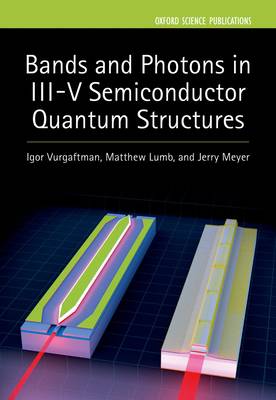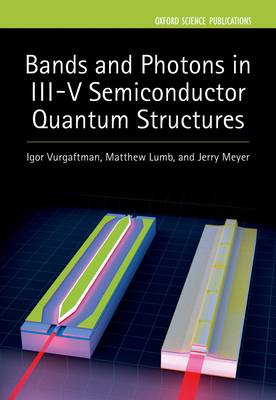
- Retrait gratuit dans votre magasin Club
- 7.000.000 titres dans notre catalogue
- Payer en toute sécurité
- Toujours un magasin près de chez vous
- Retrait gratuit dans votre magasin Club
- 7.000.0000 titres dans notre catalogue
- Payer en toute sécurité
- Toujours un magasin près de chez vous
Bands and Photons in III-V Semiconductor Quantum Structures
Igor Vurgaftman, Matthew P Lumb, Jerry R Meyer
169,45 €
+ 338 points
Description
Semiconductor quantum structures are at the core of many photonic devices such as lasers, photodetectors, solar cells etc. To appreciate why they are such a good fit to these devices, we must understand the basic features of their band structure and how they interact with incident light. Many books have taken on this task in the past, but their treatments tend either to pluck results from the literature and present them as received truths or to rely on unrealistically simple models. Bands and Photons in III-V Semiconductor Quantum Structures takes the reader from the very basics of III-V semiconductors (some preparation in quantum mechanics and electromagnetism is helpful) and shows how seemingly obscure results such as detailed forms of the Hamiltonian, optical transition strengths, and recombination mechanisms follow. The reader would not need to consult other references to fully understand the material, although a few handpicked sources are listed for those who would like to deepen their knowledge further. Connections to the properties of novel materials such as graphene and transition metal dichalcogenides are pointed out, to help prepare the reader for contributing at the forefront of research in those fields. The book also supplies a complete, up-to-date database of the band parameters that enter into the calculations, along with tables of optical constants and interpolation schemes for alloys. From these foundations, the book goes on to derive the characteristics of photonic semiconductor devices (with a focus on the mid-infrared) using the same principles of building all concepts from the ground up, explaining all derivations in detail, giving quantitative examples, and laying out dimensional arguments whenever they can help the reader's understanding.
Spécifications
Parties prenantes
- Auteur(s) :
- Editeur:
Contenu
- Nombre de pages :
- 688
- Langue:
- Anglais
- Collection :
Caractéristiques
- EAN:
- 9780198767275
- Date de parution :
- 03-02-21
- Format:
- Livre relié
- Format numérique:
- Genaaid
- Dimensions :
- 173 mm x 249 mm
- Poids :
- 1478 g

Les avis
Nous publions uniquement les avis qui respectent les conditions requises. Consultez nos conditions pour les avis.






